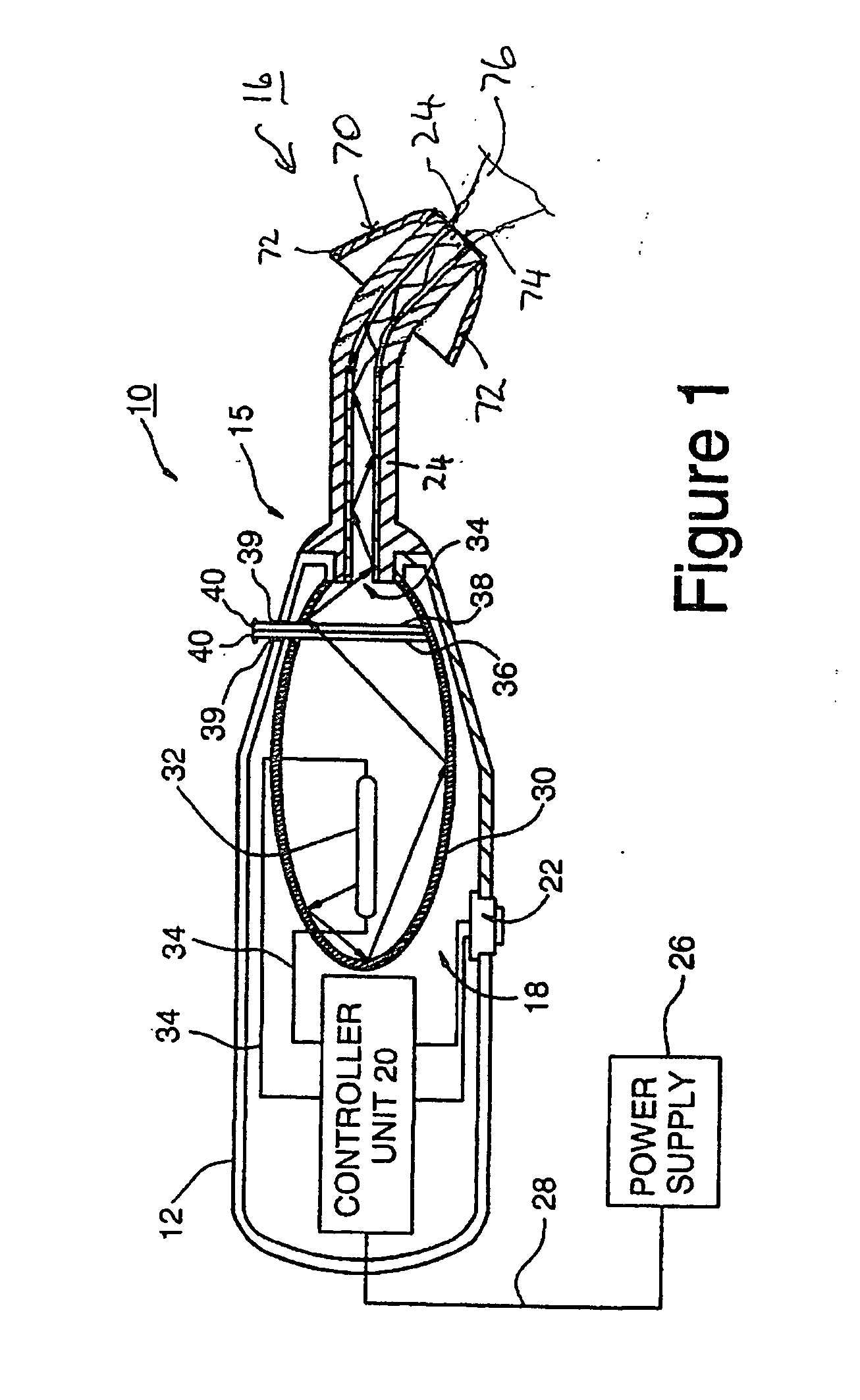Control of rhinosinusitis-related, and other microorganisms in the sino-nasal tract
- Summary
- Abstract
- Description
- Claims
- Application Information
AI Technical Summary
Benefits of technology
Problems solved by technology
Method used
Image
Examples
example 1
Nasal Treatment Using Diode Laser Energy
[0162] In one example of a nasal treatment protocol, a patient attending a doctor's office presents symptoms of chronic sinusitis, complaining of a feeling of congestion, having nasal mucous an affected voice and headaches ranging from mild to severe. The following treatment protocol is performed.
[0163] 1. The nose is cleaned of accumulated mucous and related detritus employing tissues and blowing or saline irrigation or both.
[0164] 2. One or more endoscopic cultures is or are taken from the mucous membrane lining the affected area or areas of the nose, employing a small surgical scraper, to monitor what organisms are growing. This information is used to monitor the effectiveness of the treatment, and to adjust the dosage or frequency of treatment accordingly.
[0165] 3. The affected nasal or sinus areas are coated with a concentration of about 0.5 mg / ml methylene blue, a blue-spectrum dye, employing an alginate swab (?check brochure).
[0166...
example 2
Sinus Treatment Using Diode Laser Energy
[0169] The protocol of Example 1 is repeated employing a sinus applicator tip in place of the nasal tip. Each affected or targeted sinus is treated by inserting the sinus applicator tip through the nasal cavity and positioning the sinus applicator outlet as closely adjacent to the entrance to the respective sinus cavity as possible. A desired energy dosage is then output while the practitioner holds the applicator in position. of Such treatment can be effective in managing microbial blockage of the sinus drainage ducts bringing significant relief to some patients.
[0170] Similarly, each diode laser energy treatment of a target sinus volume is effected for from about 5 to about 15 minutes depending upon the judgment of the practitioner, for example for from about 10 to about 12 minutes, completing a treatment of the sinus passages on both sides of the nose in about 30-40 minutes.
[0171] The foregoing sinus treatment is preceded by, or alternat...
example 3
Nasal and Sinus Treatments with Pulsed Photothermal Energy
[0172] The protocols of Examples 1 and 2 are repeated employing pulsed energy from a photothermal applicator equipped with a xenon flashlight having an orange filter, transmission about 600-700 nm. Two photothermal energy pulses of about 35 msec each, with a 50 msec interval, at an energy density of about 2.5 J / cm2 are applied to each nostril and target sinus area. In this case with much shorter duration energy treatments, the whole protocol is completed in about 10-20 minutes, or possibly less.
PUM
 Login to View More
Login to View More Abstract
Description
Claims
Application Information
 Login to View More
Login to View More - R&D
- Intellectual Property
- Life Sciences
- Materials
- Tech Scout
- Unparalleled Data Quality
- Higher Quality Content
- 60% Fewer Hallucinations
Browse by: Latest US Patents, China's latest patents, Technical Efficacy Thesaurus, Application Domain, Technology Topic, Popular Technical Reports.
© 2025 PatSnap. All rights reserved.Legal|Privacy policy|Modern Slavery Act Transparency Statement|Sitemap|About US| Contact US: help@patsnap.com


